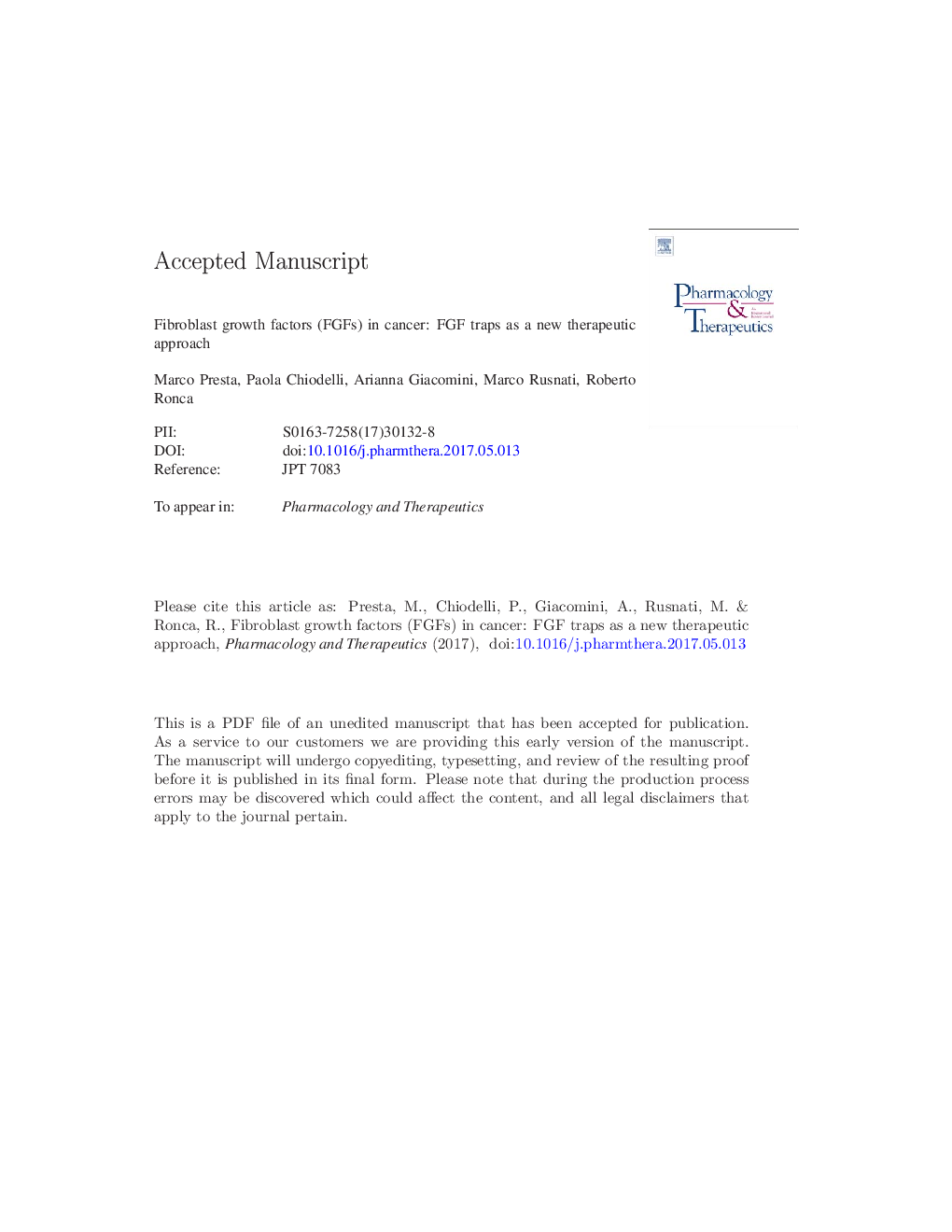| Article ID | Journal | Published Year | Pages | File Type |
|---|---|---|---|---|
| 8537034 | Pharmacology & Therapeutics | 2017 | 82 Pages |
Abstract
Originally characterized as angiogenic factors, fibroblast growth factors (FGFs) are pleiotropic factors that exert autocrine and paracrine functions on tumor and stromal cells. Thus, they may represent key players in the complex crosstalk among angiogenesis, inflammation, tumor growth, and drug resistance, all contributing to tumor progression. Given the multiple activities of FGFs, inhibitors of the FGF/FGFR system may act as “two compartment” targeting drugs able to exert a deep impact on the growth of FGF/FGFR-driven tumors. To date, the discovery of drugs targeting the FGF/FGFR system has focused mainly on the development of selective and non-selective tyrosine kinase FGFR inhibitors. Recently, a different approach has been emerging, aimed at the development of extracellular “FGF ligand traps” able to bind and sequester FGFs, thus preventing their interaction with cognate signaling receptors. This approach is based on the identification of natural FGF ligands followed by the development of small molecule mimetics endowed with a significant FGF binding/neutralizing capacity. Aim of this review is to provide an overview of the role of the FGF/FGFR system in cancer and a comprehensive analysis of the process, based on the study of the FGF interactome, which has led to the identification and characterization of FGF ligand traps. This approach has allowed the development of promising FGF-targeting molecules with potential implications for the therapy of FGF-driven tumors.
Keywords
FGFRECMPDGFCAFMMPTSP-1EGFHSPGPTX3GAGMDSCFGFMAPKStromaTAMTumor associated macrophageTyrosine kinaseCancerCancer therapymyeloid-derived suppressor cellepidermal growth factorVascular endothelial growth factorVascular Endothelial Growth Factor (VEGF)platelet derived growth factorfibroblast growth factorcancer associated fibroblastExtracellular matrixmatrix metallopeptidaseMultiple myelomaTumor microenvironmentHeparan sulfatemitogen-activated protein kinaseheparan sulfate proteoglycansGlycosaminoglycanfibroblast growth factor receptor
Related Topics
Health Sciences
Pharmacology, Toxicology and Pharmaceutical Science
Pharmacology
Authors
Marco Presta, Paola Chiodelli, Arianna Giacomini, Marco Rusnati, Roberto Ronca,
